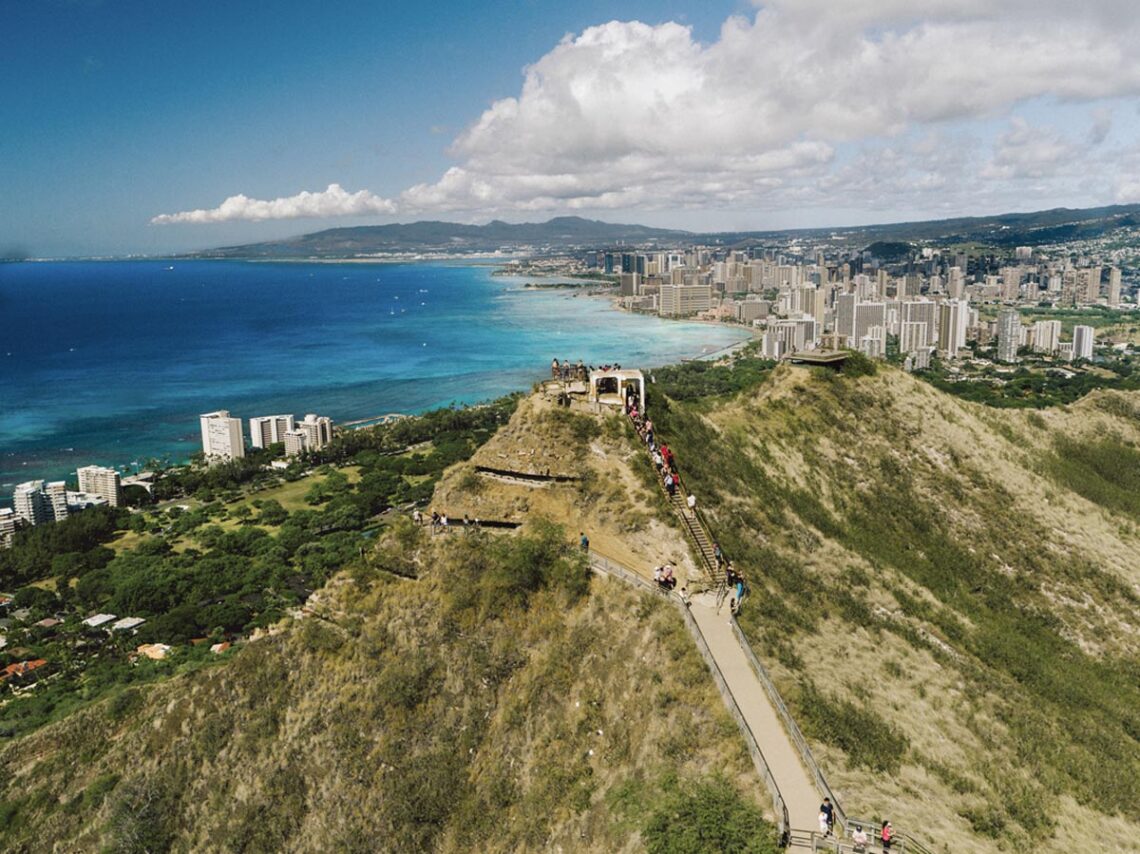ʻŌlelo Hawaiʻi
In Hawaiian culture, to name something is to assume responsibility for its care. It’s easy to make jokes about how hard it is to pronounce new words in foreign languages. However, by learning and keeping Hawaiian language alive instead, you can help preserve and perpetuate the culture that makes this place unique and special.
ʻŌlelo Hawaiʻi (Hawaiian Language) is one of the state’s two official languages besides English. The Hawaiian alphabet consists of 13 letters: A, E, H, I, K, L, M, N, O, P, U, W and the ʻokina
Orthography
Proper use of the Hawaiian language includes the use of the ‘okina (which represents a glottal stop–a consonant) and the kahakō (a macron used to indicate elongated vowels). The ‘okina and kahakō distinguish many words, and without this orthography word definitions change. For instance, ono (a fish) is different from ‘ono (delicious), and kau (to place) is different from kāu (your).
‘Okina: The ‘okina is shown in the orientation of the number 6, not as an apostrophe in the orientation of the number 9. Like all consonants in ‘ōlelo Hawai‘i, ‘okina only occur adjacent to vowels – never next to another consonant.
Kahakō: The kahakō only appears above vowels, as in ā, ē, ī, ō, ū. If you have exhausted all resources for correct spelling and do not find the correct modern orthography, then write the word without any orthographic markings; however, this should not be taken as a way of avoiding proper research.
Nā Inoa ‘Āina: Hawaiian Place Names

Hawaiian names are given with much thought to incorporate landscape features, observations of weather and natural phenomena, and stories both legendary and contemporary. The highest honor for these names, the people who gave the names, and the natural forces and stories they convey, is to use these names.
Many places in Hawai‘i are best known for things built on those places or designations given in modern times. These names are appropriate in some cases, but certainly, modern buildings or designations should never erase the history of a place.
Language resources:
- Online Dictionary for Hawaiian words and Place Names: wehewehe.org
- Learn Hawaiian on Duolingo: duolingo.com
- Hawaiʻi Tourism Authority Maʻemaʻe Toolkit: bitly.com/MaemaeToolkit

